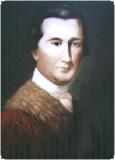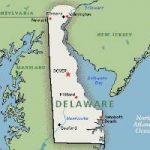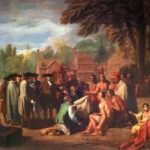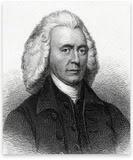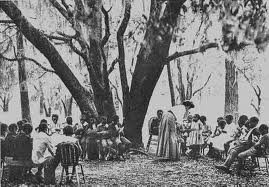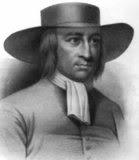Wife of Declaration of Independence Signer John Penn
John Penn was born on May 17, 1741, in Caroline County, Virginia. He was the only child of Moses Penn, a moderately successful plantation owner, and Catherine Taylor Penn. He was educated at home with only a few years of formal schooling, although his parents could well afford to pay for his tuition. Penn was distant relative of William Penn, founder of Pennsylvania.
John Penn
Moses Penn died in 1759, and John inherited an ample estate, but he was dissatisfied with the prospects it offered, and decided to continue his education. He began to study law under his cousin and neighbor, Edmund Pendleton, a lawyer, a Patriot, and one of the most accomplished statesmen of Virginia. Pendleton gave young Penn access to his library, which was one of the best in the province.
Penn studied diligently, and remarkably passed the Virginia bar exam at the age of twenty-one, after which he practiced law in Caroline County for twelve years. He quickly became noticed, and soon equaled the most distinguished at the bar. As an advocate, there were few who surpassed him.
On July 28, 1763, John Penn married Susannah Lyme of Granville County, North Carolina, and they had three children.
In 1774, Penn moved to North Carolina with his wife and children, and settled in Williamsboro, Granville County, where he set up a law practice. There, he displayed great ability and eloquence, and his practice flourished, as did his interest in politics.
In 1775, Penn was elected to the Third Provincial Congress, which met at Hillsborough, NC. Shortly thereafter, he was elected to succeed Richard Caswell as delegate to the Continental Congress, taking his seat on October 12. Penn, though very talkative in private, rarely spoke in the Congress, but he was very diligent in public business.
On April 12, 1776, the North Carolina Provincial Congress met at Halifax and passed a resolution known as the Halifax Resolves, which were the very first instructions by any colony that authorized its delegates to the Continental Congress to vote for independence from Great Britain.
Penn voted for independence on July 2 and voted to accept Thomas Jefferson’s Declaration of Independence on July 4, 1776, and signed the official document on August 2, 1776. Penn was only 35 years of age at the time. He was one of the 16 signers of the Declaration who also signed the Articles of Confederation.
![]()
John Penn Signature
On the Declaration of Independence
After signing the Declaration, John Penn returned home and was chosen at once to occupy an important position on the North Carolina Board of War. His major task was to keep the militia well supplied. He was heavily involved with supplying the General Nathaniel Greene’s Continental troops and the guerrilla fighters under the command of Francis Marion. His dedicated efforts helped the Americans force Lord Cornwallis into retreat before the end of 1780.
While serving in Congress, Penn had an argument over political issues with Henry Laurens of South Carolina, and Laurens challenged Penn to a duel. Neither man really wanted to fight a duel, but they could not find a way to back down. Living at the same boardinghouse, the two men would often eat breakfast together, including the day of their duel.
While crossing an empty lot together on the way to the dueling place, which was an open lot across from the Masonic Hall on Chestnut Street in Philadelphia. Along the way, they had to cross a muddy trench. Penn helped Laurens across, as Laurens was much older, and they realized the duel was foolish. They quickly apologized to each other, and ended the discussion as friends.
When the first North Carolina General Assembly met in April of 1777, Penn was chosen to return as delegate to the Continental Congress. A firm advocate of permanent union, Penn was one of three representatives from his state to ratify the Articles of Confederation, America’s first governing document, in 1778.
The first signing of the Articles of Confederation began on July 9, 1778 with delegates from New Hampshire, Massachusetts, Rhode Island, Connecticut, New York, Pennsylvania, Virginia and South Carolina involved in the process. The delegates from New Jersey, Delaware, and Maryland could not sign because their respective states had not yet ratified the Articles, and the delegates from North Carolina and Georgia were not present on that day. Additional signings occurred when more delegates were in attendance. John Penn was the first of the North Carolina delegation to sign the document on July 10, 1778, and the rest of his delegation signed on July 21.
Late in 1780 the Governor of North Carolina recalled Penn from Congress to sit on the emergency Board of War, created by the legislature in September 1780, to share the responsibility for military affairs. The three-man board, of which Penn became the leading member, in effect soon assumed control of all military matters. The Governor and military officials, resenting the infringement upon their prerogatives and their loss of authority, persuaded the legislature to abolish the board in January 1781.
In 1781, Penn was elected to the Governor’s Council and served as its president during the last months of the war. In 1783, Penn lost re-election to the council and ceased to be active in public life. He declined a judgeship in North Carolina due to failing health, and resumed his law practice.
In March of 1784, Penn was appointed receiver of taxes for North Carolina, but he resigned that office the following month, because the state gave him no authority to enforce collection of the taxes.
John Penn afterward resumed his life as a private citizen due to the state of his health, and resumed his law practice, which flourished.
Like fellow signers Joseph Hewes and William Hooper, John Penn had adopted North Carolina as his home. Except for a five-year stint in the Continental Congress and a brief career in State service, he passed the years peacefully as a country lawyer, far from the clamor of the public forum. Penn’s character, his energy, his keen mind, and his loyalty were all used for the benefit of North Carolina and the new nation.
John Penn died on September 14, 1788 at the age of forty-seven. He was buried on his estate near Island Creek in Granville County. In his will, Penn divided his estate between a son, William Penn, and a daughter, Lucy Penn Taylor.
In 1894, Penn was reinterred at the Guilford Battle Grounds near Greensboro, NC, with fellow signer William Hooper. The grave of the third signer, Joseph Hewes, was lost and the whereabouts of his remains is unknown. A memorial, called the Signers’ Monument or the Hooper-Penn-Hewes Monument, marks the location of Penn’s remains.
However, the remains of Susannah Lyme Penn were left behind, and the John Penn Chapter has arranged to mark her grave with an appropriate stone. Near the site of the old Penn home is the historical John Penn spring surrounded by heavy woods.

Monument to the Signers
John Penn Gravesite
Guilford Court House National Military Park
Greensboro, North Carolina
The third North Carolina Signer of the Declaration, Joseph Hewes, is honored along with Penn and Hooper on the plaque on the monument. The statue on the top is of William Hooper, who was a powerful orator in Congress.
There are some who disapprove of these reburials, and this monument is not featured very prominently in the Military Park’s literature. Penn and Hooper, while certainly important figures in North Carolina and United States history, played no role in the battle that was fought there.
SOURCES
John Penn
John Penn 1741-1788
Wikipedia: John Penn
John Penn: North Carolina
John Penn – Grave of a Famous Person
